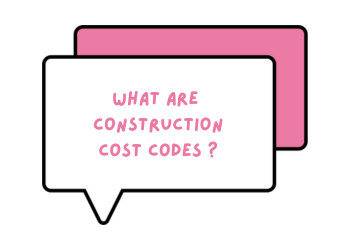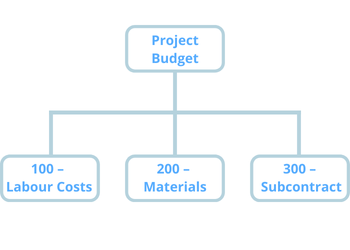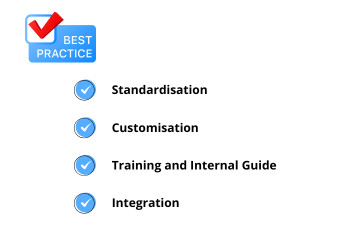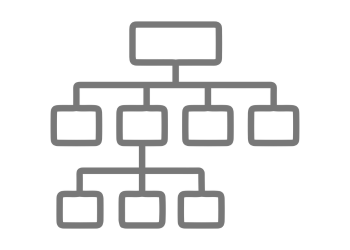As someone who works closely with SMB contractors every day through implementing the LiveCosts product (a job costing software), I‘’ve had the unique opportunity to look under the hood of hundreds of SMB construction businesses. This firsthand experience reveals how accurate cost management, through the use of specific cost codes, is not just a cornerstone but the foundation of success for profitable projects.
This comprehensive guide focuses on construction cost codes specifically for SMB contractors, diving into its importance and best practices to design and implement the process. I hope you find it useful.
Table of Contents
- Introduction to Construction Cost Codes
- What Are Construction Cost Codes?
- The Importance of Aligning Cost Codes with Estimates
- Designing User-Friendly Cost Code Structures
- Examples of User-Friendly Cost Code Structures
- Best Practices for Implementing Cost Codes
- Setting Up Your Own Cost Codes: A Step-by-Step Guide
- Cost Code Structures in the UK, Ireland, Australia and the US
Introduction to Construction Cost Codes
Construction cost codes are a standardised system used to manage, track, and report costs associated with a construction project. They provide a universal language for project managers, contractors, and stakeholders to communicate costs effectively. A well-structured cost code system enables efficient project management, accurate cash flow forecasting, and improved transparency. By categorising expenses into specific codes, project managers can easily monitor financial performance, identify cost overruns, and make informed decisions. In this section, we will delve into the world of cost codes, exploring their importance, benefits, and applications in the construction industry.
What Are Construction Cost Codes ?

Construction cost codes are a set of standardised codes used to categorise and track costs associated with different aspects of a construction project. They are essential for construction companies, as they simplify project data management, improve financial oversight, and facilitate clear communication among stakeholders. Cost codes can be used to track labour costs, material costs, equipment costs, and other expenses related to a project. By using standardised cost codes, construction companies can ensure consistency and accuracy in their financial reporting, enabling better decision-making and project management. This systematic approach helps in maintaining control over project budgets and enhances overall financial performance.
The Importance of Aligning Cost Codes with Estimates
Aligning cost codes directly with your project estimates is a great idea. This alignment allows you to compare actual expenses against projected costs, providing valuable insights into project performance. By establishing a clear connection between your estimates and cost codes, you can identify areas where the project is over or under budget, enabling timely interventions to keep the project on track. This also provides a great feedback loop on whether the pricing or execution is accurate. Estimate main headings or summary pages can be a great place to start.
Designing User-Friendly Cost Code Structures

First of all there are no hard and fast rules here. Each contractor (and dependent on trade) will have different requirements. Often I find it is best to reverse engineer what you would like to see in reports as you complete the project. What information is useful?
When creating cost code structures, it’s essential to consider the end-users—the project managers, accountants, and site workers who will interact with the system daily. Users can either create their own codes or utilize the codes provided by the software, enhancing accessibility and organisation in cost-tracking processes. A complex or unintuitive cost code system can lead to errors, inefficiencies, and frustration among staff. Therefore, simplicity and clarity should be prioritised. A well-structured cost code system ensures that everyone in your organisation can quickly identify and apply the correct code, facilitating accurate tracking and reporting.
Examples of User-Friendly Cost Code Structures
Simple Structure
A simple cost code structure is designed for smaller projects where ease of use and clarity are top priorities. This approach uses single codes to represent each major category and keeps the system easy to navigate.
Example:

In this structure you could have :
- 100 – covers all labour-related costs.
- 200 – includes all materials required for the project.
- 300 – tracks costs associated with equipment and machinery.
- 400 – is for subcontractor costs. ( could be extended by 401 Electrical etc )
- 500 – is for general overhead costs, such as office supplies, insurance, etc.
- 600 – captures any other costs that don’t fall under the above categories, like miscellaneous or contingency expenses.
Detailed Structure
For larger and more complex projects, a hierarchical structure provides detailed tracking and helps organise costs more effectively across multiple project components. This structure uses a detailed number system, with 01 representing the division and further codes breaking down each category into subcategories.
Example (CSI MasterFormat-Inspired):
- 01 – General Requirements
- 100 – Project Management
- 200 – Temporary Facilities
- 300 – Electrical Subcontract
- 02 – Site Construction
- 100 – Earthwork
- 200 – Foundations
- 03 – Concrete Work
- 100 – Concrete
- 200 – Formwork
Setting Up Your Own Cost Codes: A Step-by-Step Guide

For Small and Medium-sized Businesses (SMBs), establishing a tailored cost code system is essential for effective project management. Here’s how to set up your own:
Assess Your Business Needs:
Evaluate the specific requirements of your projects and operations to determine the level of detail needed in your cost codes.
Develop a Cost Breakdown Structure (CBS):
Create a hierarchical structure that categorises all potential costs associated with your projects. This structure should align with your business processes and project types.
Assign Unique Codes:
Assign a unique identifier to each category and subcategory within your CBS. Ensure that these codes are intuitive and easy to understand for all team members.
Implement the System:
Integrate the cost code system into your softwares. Ensure that all team members are trained on its use and understand its importance in financial tracking.
Monitor and Adjust:
Regularly review the effectiveness of your cost code system and make adjustments as needed to improve accuracy and efficiency.
The effectiveness of the data collected relies on the quality of its collection process and its alignment with the firm’s operational needs.
Construction Project Cost Management
Effective construction project cost management is crucial for the success of any construction project. A well-structured cost code system is essential for tracking costs, identifying areas for improvement, and making informed decisions. Construction project cost management involves several key steps, including defining cost code categories, assigning cost codes to specific projects, and regularly reviewing and updating cost codes. By implementing a robust cost code system, construction companies can streamline their cost tracking processes, reduce errors, and improve their overall financial performance. This proactive approach ensures that project costs are kept in check, and resources are allocated efficiently.
Real-Time Cost Tracking
Real-time cost tracking is a critical aspect of construction project management. It enables project managers to monitor costs as they are incurred, identify potential issues, and make timely adjustments to ensure project profitability. Construction management software can facilitate real-time cost tracking by providing automated cost allocation, assigning codes based on predefined criteria, and generating detailed reports. By leveraging real-time cost tracking, construction companies can respond quickly to changes in project costs, minimize costly mistakes, and optimise their resource allocation. This dynamic approach to cost management enhances project efficiency and financial oversight.
Construction Management Software
Construction management software is a powerful tool for streamlining construction project management. It can help construction companies integrate cost codes, track costs, and manage project finances more efficiently. By using construction management software, project managers can automate cost allocation, generate detailed reports, and make data-driven decisions. The software can also facilitate collaboration among stakeholders, reduce errors, and improve overall project performance. In the next section, we will explore the benefits of using construction management software and how it can help construction companies implement cost codes effectively. This technology-driven approach ensures that project managers have the tools they need to maintain control over project costs and enhance financial performance.
Best Practices for Implementing Cost Codes

- Standardisation
Adopt a standardised cost code system to ensure consistency across projects. This helps in categorising costs effectively and simplifies financial reporting. You don’t always have to use each code but using the same numbers each time will help.
2. Customisation
While standardisation is beneficial, it’s also important to customise the cost code structure to fit the specific needs of your business. Tailoring the system to reflect the unique aspects of your estimates and projects can enhance its effectiveness and usability.
3. Training and Internal Guide
Invest in training your team on the cost code system to ensure accurate application and data entry. Develop a comprehensive company article that outlines the importance of construction cost codes and provides a step-by-step guide on how to use them effectively. This resource can serve as a valuable reference for your current & new team members, ensuring consistency and clarity in the application of cost codes across all projects.
4. Integration
Integrate your cost code system with your job costing software or accounting software to streamline data flow and enhance real-time tracking. This integration provides a comprehensive view of project finances and facilitates better decision-making.
5. Managing Cost Codes
Proper oversight and management of cost codes can significantly improve operational outcomes. Implementing best practices for managing cost codes ensures that they are utilized effectively, enhancing overall efficiency.
Cost Code Structures in the UK, Ireland, Australia and the US
1. United Kingdom: The Common Arrangement of Work Sections (CAWS)
is the primary system used in the UK. It’s similar to the CSI MasterFormat but is tailored to UK construction practices. CAWS is ideal for both large and small-scale projects, and SMBs can benefit from its structured approach. (Read more about CAWS)
2. Ireland:
Ireland typically follows the same cost coding system as the UK, adopting CAWS for construction projects. The flexibility of this system allows SMBs to adapt it to their specific needs, ensuring simplicity and clarity in project financial tracking.
3. Australia
In Australia, Uniformat is the most commonly used cost coding system, focusing on the functional components of a building (e.g., foundations, superstructure, interior finishes). Uniformat is highly suitable for SMBs in the construction industry as it provides a clear, logical breakdown of costs. (Read more on Uniformat)
4. United States
The Construction Specifications Institute (CSI) provides the MasterFormat, a comprehensive standard for organising construction specifications and cost codes. This structure is widely used across the U.S. and is applicable to all project sizes, including SMBs. For example, under the division ’02 – Site Construction’, you can find ‘300 – Pollution Control Equipment’, which is essential for maintaining environmental compliance and managing pollution during construction activities. (Learn more about the CSI MasterFormat)
Conclusion
By focusing on these aspects and utilising visual aids, you can develop a cost code system that not only enhances financial management but also improves overall project efficiency and profitability.
Learn more about LiveCosts
Written By :
Niall Brennan
Product Manager & Founder @Livecosts.com






